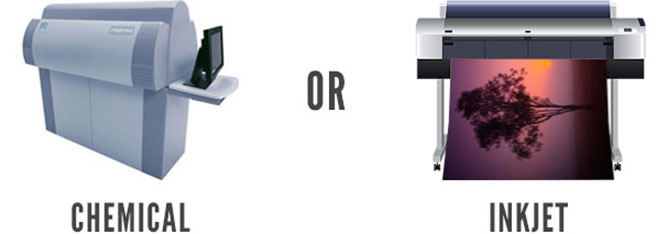Do you know which photographic paper the majority of your clients will choose time and time again, making you more sales and more profit for your photography business? Not sure? Well perhaps it’s time to find out…
There are numerous photographic paper types on the market today and as photographers we are spoiled for choice. In effect this makes selecting the right photographic paper even more difficult.

Surprisingly there are a lot of factors to take into consideration when choosing the right photographic paper for your photography. Here are five factors (…in no particular order) that I believe to be important and should be taken into consideration before making your decision:
1. ) Popularity
If you intend on running a successful photography business you will need to know not only what photographic papers are currently available, but more importantly what are the current market trends and which photographic paper type do your clients choose and buy more of than any other you have on offer?

Not sure? …Then start testing photographic papers and recording your sales volumes. The correct paper surface on display in your photographic studio could mean the difference between a small print order or a large print order being placed by your clients.
2. ) Quality
Second, in business today the quality of your products is paramount which is why you need to select a paper that is not only durable, but also has a high archival rating.
Unfortunately, not all papers are made equally… So, how do you know which one will be right for your business?
The only way to determine whether a photographic paper will meet your individual requirements is by spending time researching and testing.
I recommend you take a look at Wilhelm Research who specialise in the testing and performance of photographic papers.
Every few months Wilhelm Research publish performance reports which test how quickly specific photographic papers will deteriorate when displayed in common, everyday environments.
By taking the time to read and compare these reports you’ll gain insights into which photographic papers will stand the test of time.
3. ) Printing
Third, what photographic printing process will you be using? Chemical or inkjet?…
When compared side-by-side it becomes quite evident that these printing processes produce entirely different results from their visual appearance through to their archivability.

If you’re unsure what the difference between chemical and inkjet printing is… here’s a brief explanation. When I refer to “chemical”, I’m simply describing the chemical process (RA4) photographic papers go through after they have been exposed by an LED (Light Emitting Diode) photographic printer.
Inkjet printing on the other hand, refers to the process whereby an inkjet printer prints droplets of ink onto the surface of a photographic paper which then dries.
If you intend on using inkjet printers for outputting your photographs you will need to take into account not only the paper stock, but also the quality of the ink. If either the paper or the ink are substandard the quality of your photographs will be jeopardized.
4. ) Finishing
Finishing is the final step in a photographs journey and typically most photographers don’t factor into their decision process prior to choosing a photographic paper.
Simply put, finishing refers to the process of making a photographic print ready for display. As an added benefit finishing also provides an extra layer of protection for photographic prints, enhancing their archival life.
There are many finishing techniques that produce a variety of different results from mounting, laminating and framing. Unfortunately not all paper types are suited to or handle certain finishing techniques very well.
(In this video Karl Taylor and John Fitzgerald will introduce you to the different types of finishing techniques you could choose for displaying your photographs.)
Therefore, understanding how your prints are going to be finished will help you choose the right paper type for the job at hand.
But, what if you client doesn’t want finished prints?
If your client does not intend on finishing your photographs, printing on surface types like glossy should be avoided at all costs, as these photos will evidently passed around family members and fingerprints will become clearly visible.
5. ) “WOW” Factor
Finally, the “WOW” factor… Some photographic papers visually produce better results than others, which is often due to a paper’s surface type and color gamut.

So, choosing a paper that is able to handle the full spectrum of colors that you capture in your photographs is important and will make color managing your photography easier.
Of course taking into account your own personal style is important, but not always necessary when it comes to keeping your clients happy and making money.
But, What If You Still Can’t Make Up Your Mind?
Well, you’ve either overlooked something mentioned in this article or perhaps like me you find it difficult to stop focusing on perfection and instead focus on taking action which will create continued growth in your business.
The last thing you want to do is offer too many different paper types, because too much choice will create confusion in the mind of your client which will make finalizing print orders a nightmare.
In order to avoid confusing your clients, I recommend that you only have a handful of different papers types on offer. Each paper type should also be considerably different from the next and your clients should easily be able to distinguish one from the other.
If you don’t want to spend money on testing just yet, ask your photographic lab for paper samples that you can keep and leave around your studio. Familiarizing yourself with how they look and feel will help you come to a decision.
In this article you’ve learnt why it’s important to choose the correct paper type for you photography business, what specific criteria you should consider when assessing photographic papers and how to avoid confusing your clients by focusing on simplicity.
If you found this article insightful, please share it with your friends and don’t forget to sign up for our email newsletter which will notify you upon the release of new articles and tutorials.














Share This Post With Your Friends...
Share the post "How To Increase Sales By Choosing The Right Photographic Paper"